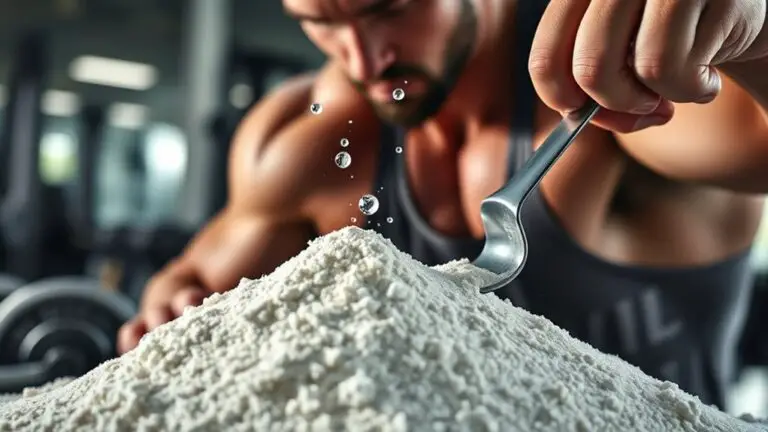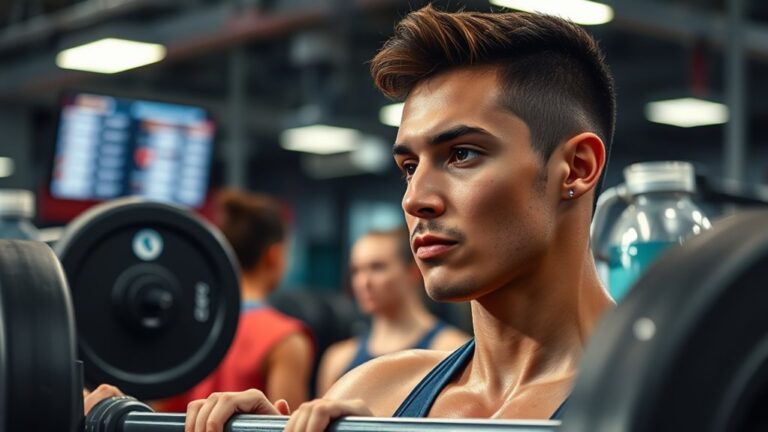The Best Gym Shoes for Weightlifting
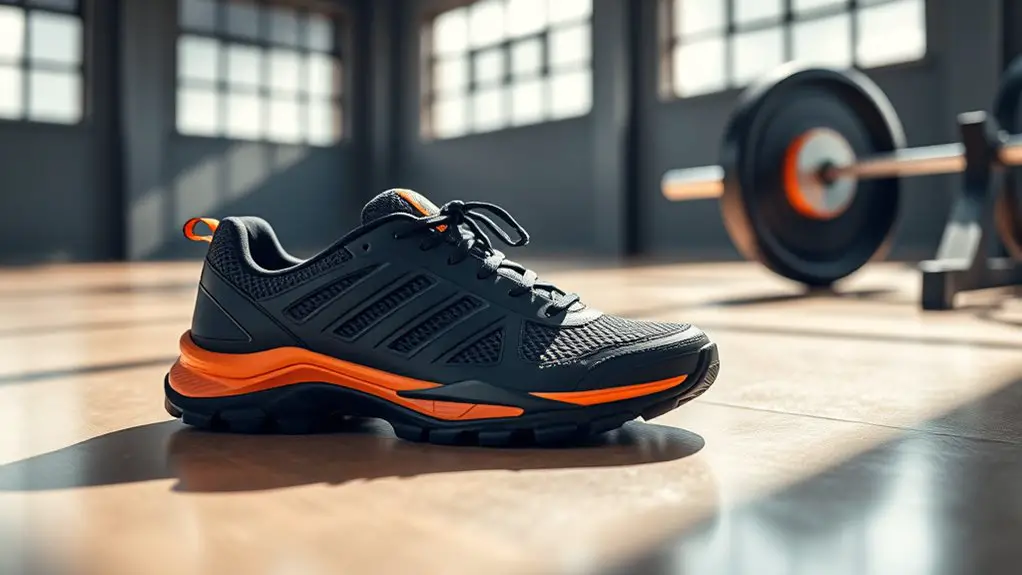
Choosing the best gym shoes for weightlifting is key to enhancing your performance and safety. Look for a snug fit that offers stability, a firm heel, and minimal cushioning. Top options include Adidas Powerlift, Nike Romaleos, and Reebok Legacy Lifters. Each brand has its strengths, so consider what suits you best. Proper care and maintenance will keep your shoes in top shape. If you want to discover more recommendations and tips, keep exploring.
Importance of Choosing the Right Weightlifting Shoes
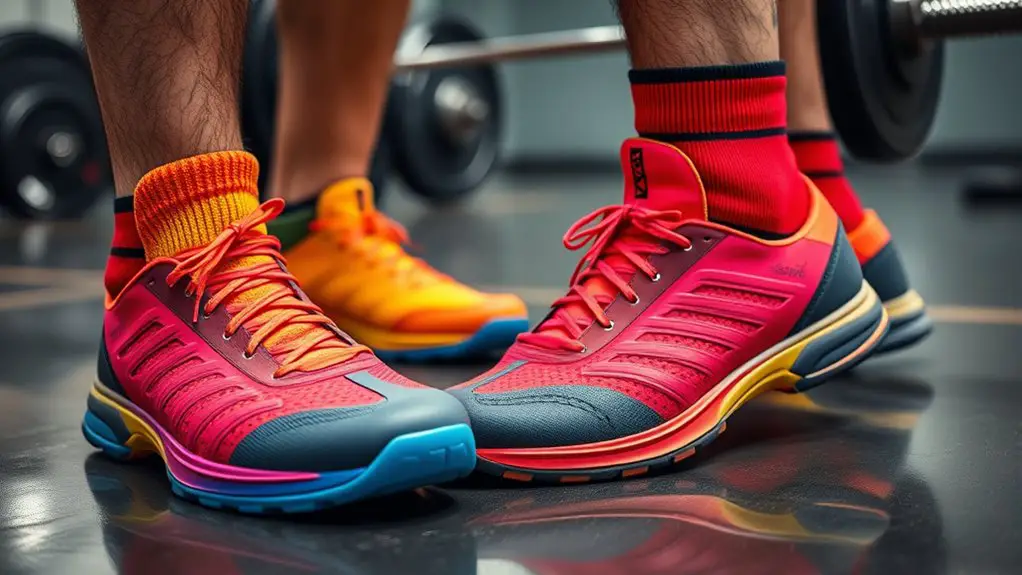
When you’re serious about weightlifting, choosing the right shoes can make all the difference in your performance and safety. A proper shoe fit is crucial; shoes that are too tight or too loose can lead to discomfort or even injury. You need a snug fit that allows for some movement without sacrificing support.
Stability support is another important factor. Weightlifting requires a solid base to guarantee you maintain balance during lifts. Shoes designed specifically for weightlifting often feature a raised heel and a firm sole, helping you stay grounded while maximizing force transfer. This can greatly enhance your lifting technique and reduce the risk of ankle sprains or falls.
In short, investing in the right weightlifting shoes is essential for both your safety and performance, allowing you to focus on your training with confidence. Remember, the right pair can keep you safe and help you reach your lifting goals.
Key Features to Look for in Weightlifting Footwear
Finding the right weightlifting shoes isn’t just about fit; it’s also about understanding the key features that can enhance your performance. First and foremost, look for shoe stability. A stable shoe provides a solid base, reducing the risk of injury during heavy lifts. Shoes with a firm heel and a secure fit help keep your foot in place, allowing you to focus on your form.
Next, consider grip patterns. Effective grip is essential for maintaining balance and traction on the platform. Shoes with specialized grip patterns can help prevent slipping, especially when lifting heavy weights. This added security can greatly enhance your confidence and performance.
Lastly, remember that cushioning should be minimal. Too much cushioning can compromise stability, so opt for shoes that offer just the right balance. By focusing on these key features, you’ll find footwear that not only fits well but also promotes safety and efficiency in your weightlifting journey.
Top Recommendations for Weightlifting Shoes
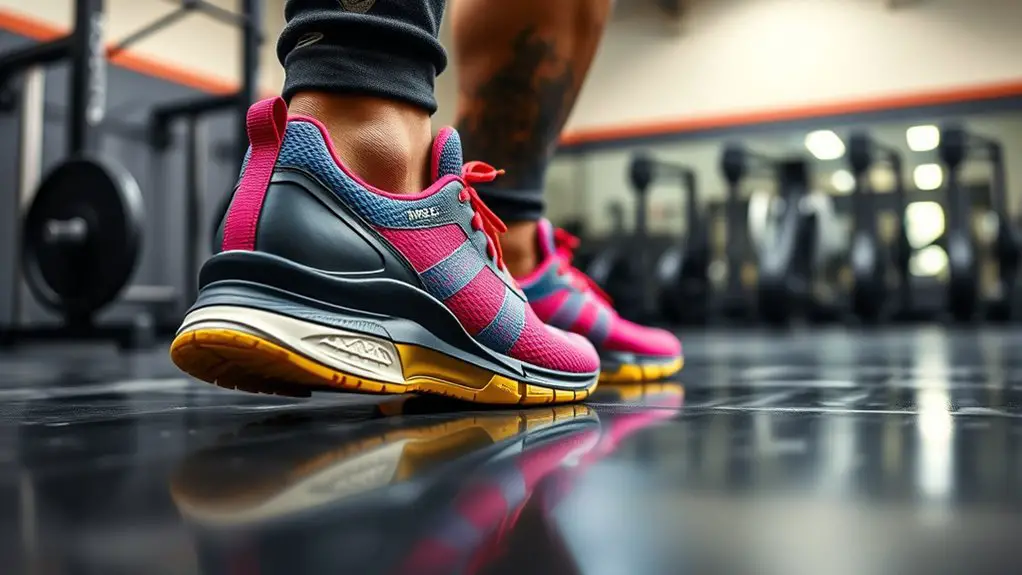
Choosing the right weightlifting shoes can greatly influence your performance, so it’s crucial to evaluate top recommendations in the market. First, look for shoes that provide a snug shoe fit, as this guarantees stability during lifts. A secure fit helps you maintain proper weight distribution, minimizing the risk of injury.
One highly recommended option is the Adidas Powerlift series, known for its solid heel and supportive structure. Another excellent choice is the Nike Romaleos, which offer adjustable straps for a customized fit and enhanced stability. If you’re on a budget, consider the Reebok Legacy Lifters; they provide great support without breaking the bank.
Prioritize shoes that keep your feet grounded and aligned, helping you lift safely and effectively. With the right pair, you’ll feel more confident in your lifts and reduce the chances of slips or injuries.
Comparing Different Brands and Models
Many lifters often find themselves weighing the pros and cons of various weightlifting shoe brands and models. When evaluating Nike versus Adidas, you might appreciate Nike’s innovative design but lean toward Adidas for its classic stability. On the other hand, Reebok versus New Balance offers a similar debate; Reebok is known for its robust construction, while New Balance often provides superior comfort.
Here are some factors to bear in mind:
- Fit: Make certain the shoe hugs your foot without being too tight.
- Heel Height: A higher heel can improve squat depth but may not suit everyone.
- Material: Look for durable materials that offer breathability.
- Traction: A good grip is crucial for safe lifting.
- Weight: Lighter shoes can enhance your performance without compromising support.
Ultimately, your choice should prioritize safety, comfort, and performance.
Tips for Proper Shoe Care and Maintenance
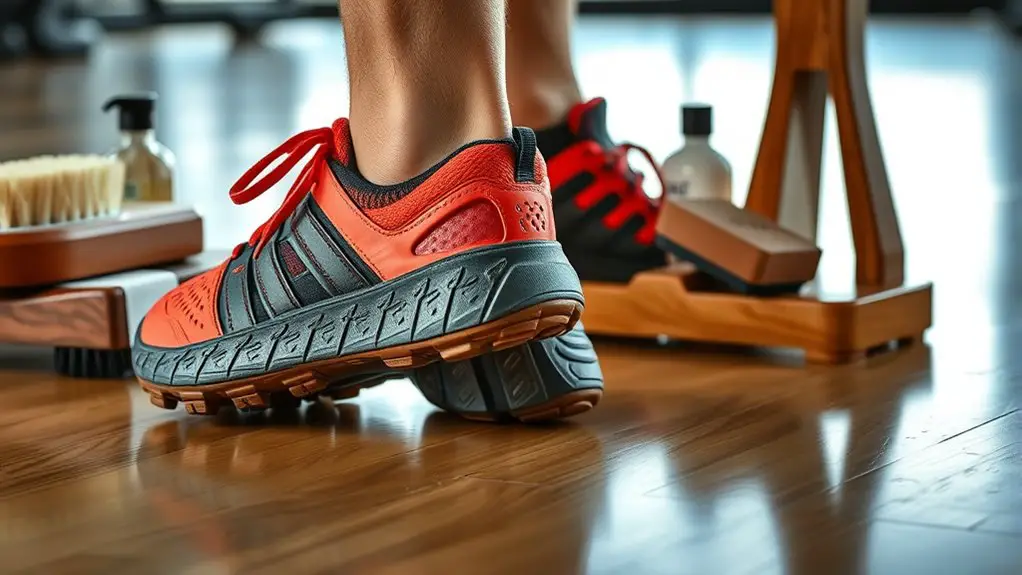
While it may seem easy to toss your weightlifting shoes in a corner after a workout, proper care and maintenance can greatly extend their lifespan and performance. Start with regular shoe cleaning; dirt and sweat can degrade materials over time. Use a damp cloth to wipe down the exterior and let them air dry. Avoid using harsh chemicals, as they can compromise the shoe’s integrity.
Next, focus on sole protection. When lifting, try to train on clean, dry surfaces to prevent unnecessary wear on your soles. If you notice uneven wear, consider rotating your shoes or using a dedicated pair for specific lifts. Store your shoes in a cool, dry place to prevent mold and odor buildup.
Frequently Asked Questions
Can I Use Running Shoes for Weightlifting?
Imagine you’re a knight on a quest; you wouldn’t wear flimsy slippers into battle, right? Similarly, while you *can* use running shoes for weightlifting, they have drawbacks. Their cushioning may lead to instability, risking your safety. Weightlifting shoes, with their firm soles, provide better support and grip, allowing you to lift with confidence. So, while running shoes might seem convenient, for the weightlifting arena, proper footwear is your best armor.
How Often Should I Replace My Weightlifting Shoes?
You should aim to replace your weightlifting shoes every 6 to 12 months, depending on your usage and the shoe materials. Over time, the shoe lifespan diminishes as the cushioning and support degrade, potentially compromising your safety during lifts. If you notice any signs of wear, like an unstable sole or lack of grip, it’s time to invest in a new pair. Prioritizing quality and durability will help keep your workouts safe and effective.
Do Weightlifting Shoes Improve Performance Significantly?
Think of weightlifting shoes as the secret sauce to your lifting game. They can enhance your performance considerably by providing stability and support, thanks to their specialized shoe materials. This stability helps you maintain proper form, reducing the risk of injury. While they’re not a magic bullet, the performance benefits can be noticeable, especially during heavy lifts. So, investing in a good pair might just give you that extra edge you’re looking for.
Are Weightlifting Shoes Suitable for Other Gym Activities?
Weightlifting shoes aren’t typically designed for other gym activities, but you can use them for some cross training benefits. Their rigid soles provide excellent stability during lifts, but this shoe flexibility might not be ideal for high-impact exercises or agility drills. If safety’s a concern, it’s best to have dedicated shoes for activities like running or jumping to guarantee you maintain proper support and prevent injury while you’re working out.
What Size Should I Choose for Weightlifting Shoes?
When you’re choosing the right size for weightlifting shoes, it’s essential to take into account your fit preference. You’ll want a snug fit to guarantee stability, but not so tight that it compromises your comfort. Generally, going half a size down from your regular shoe size works for many lifters. Remember, a proper shoe sizing can enhance your performance and safety, allowing you to lift effectively while minimizing the risk of injury. Trust your instincts!



